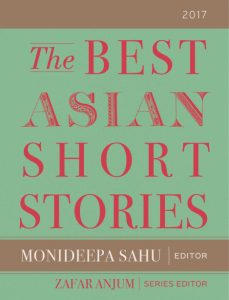WIT Life #334: Hikikomori shifting demographics
Written by professional Writer/Interpreter/Translator Stacy Smith (Kumamoto-ken CIR, 2000-03), WIT Life is a periodic series about aspects of Japanese culture such as film, food and language. Stacy starts her day by watching Fujisankei’s newscast in Japanese, and here she shares some interesting tidbits and trends along with her own observations.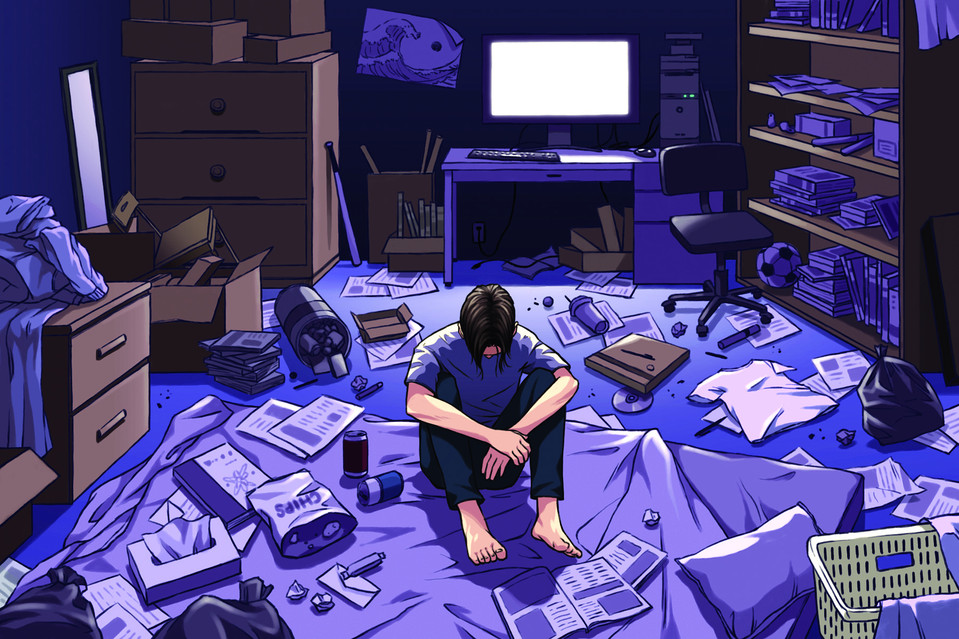
The plight of Japan’s hikikomori (ひきこもり or voluntary shut-ins), has always been a topic that received a lot of buzz, but has primarily focused on young people affected by this phenomenon. However, according to a recent nationwide survey carried out by the Cabinet Office that was the first of its kind, recent trends indicate that it is actually older people who now comprise a larger percentage of Japan’s hikikomori population (gender-wise, men still comprise the majority of ![]()
![]() hikikikomori at a rate of around 3:1).
hikikikomori at a rate of around 3:1).
This BBC article characterized hikikomori as “modern-day hermits,” and describes how this condition is not only limited to Japan, but also seen in other Asian and European countries. In fact, the problem of loneliness and social isolation got so bad in the UK that it appointed its first designated minister for loneliness last year. Here in the States, loneliness has various deleterious effects, which have become Read More
WIT Life #333: King Kazu
Written by professional Writer/Interpreter/Translator Stacy Smith (Kumamoto-ken CIR, 2000-03), WIT Life is a periodic series about aspects of Japanese culture such as film, food and language. Stacy starts her day by watching Fujisankei’s newscast in Japanese, and here she shares some interesting tidbits and trends along with her own observations.
The sports portion of today’s Japanese news showcased the celebration of Kazu Miura’s 52nd birthday. Looking as dapper as ever in a fashionable white suit in front of a huge cake, he shared that every birthday he wore a different color suit (past years have included bright red, yellow and blue), but that he had run out of colors so had to return to white. Perhaps it is this enthusiasm and youthful spirit that enables him to keep pace on the soccer field with professional players decades his junior. Miura (a.k.a. “King Kazu”) began his career in 1986, and he is considered to be Japan’s first soccer superstar.
He was the subject of a NYT profile last year, in which he was described as the epitome of Read More
WIT Life #330: Japan’s 2018 Buzzwords
Written by professional Writer/Interpreter/Translator Stacy Smith (Kumamoto-ken CIR, 2000-03), WIT Life is a periodic series about aspects of Japanese culture such as film, food and language. Stacy starts her day by watching Fujisankei’s newscast in Japanese, and here she shares some interesting tidbits and trends along with her own observations.
It’s hard to believe but 2019 is just around the corner, the time when Best of 2018 lists begin to emerge. From Japan, the nominees for this year’s buzzwords have been compiled. The 30 candidates will be whittled down to the top 10 as well as an overall winner, to be announced on December 3 (you can vote for your favorite at the bottom of the link!).
Unsurprisingly, many relate to Prime Minister Abe’s work-style reform initiatives (働き方改革 or hatara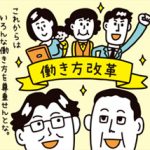 kikata kaikaku). I hadn’t heard of short-time harassment (ジタハラ・ 時短ハラスメント or jitahara・jitan-harasumento), the pressure employers put on their workers to reduce overtime and maximize productivity, but I was familiar with the high-level professional system (⾼プロ・⾼度プロフェッショナル制度 or kōdo puro・kōdo purofesshonaru seido). This allows specialists like financial dealers or analysts with ¥10.75 million plus in annual income to be paid based on work performance, rather than hours worked. They won’t receive overtime pay as a result of being exempt from typical regulations, something the opposition party said would lead to longer working hours. It managed to pass and will go into effect for large companies at the start of the next fiscal year.
kikata kaikaku). I hadn’t heard of short-time harassment (ジタハラ・ 時短ハラスメント or jitahara・jitan-harasumento), the pressure employers put on their workers to reduce overtime and maximize productivity, but I was familiar with the high-level professional system (⾼プロ・⾼度プロフェッショナル制度 or kōdo puro・kōdo purofesshonaru seido). This allows specialists like financial dealers or analysts with ¥10.75 million plus in annual income to be paid based on work performance, rather than hours worked. They won’t receive overtime pay as a result of being exempt from typical regulations, something the opposition party said would lead to longer working hours. It managed to pass and will go into effect for large companies at the start of the next fiscal year.
In the sports category, I liked the selection of buzzword Naomi-esque (なおみ節 or Naomi-bushi). It refers to the gentle and polite way Japanese-Haitian tennis player Naomi Osaka speaks, in contrast to her on-court tenacity. As reported in this blog, she Read More
WIT Life #329: Japan-Related Films for Your Weekend
Written by professional Writer/Interpreter/Translator Stacy Smith (Kumamoto-ken CIR, 2000-03), WIT Life is a periodic series about aspects of Japanese culture such as film, food and language. Stacy starts her day by watching Fujisankei’s Japanese news, and here she shares some interesting tidbits and trends along with her own observations.
This week the Museum of the Moving Image (MoMI) hosted the premiere of the 2018 documentary 3100: Run and Become from director Sanjay Rawal. It showcases the Self-Transcendence 3100 Mile Race which takes place in Queens every summer. This elite competition requires participants to run this unbelievable distance within 52 days, which means averaging at least 60 miles per day. Competitors come from all over the world, and some have run it as many as 14 times. Rawal also intersperses stories of other amazing distance challenges, such as a member of the Navaho Nation running 110 miles across the desert in memory of his father’s struggles when young, the Gaolo-San Bushmen running in pursuit of their prey and as part of their lifestyle, and the Tendai-shu monks of Mt. Hiei in Japan who carry out a practice of walking to attain enlightenment.
Spiritual training via walking is called 回峰行 (kaihōgyō), and the monks on Mt. Hiei carry out a version that takes place over 1000 days during a seven-year retreat period, called 千日回峰行 (sennichi kaihōgyō). During this time, the monk must remove himself from all family ties and other worldly distractions. Since this tradition began in 1885, only 50 plus monks have finished this quest, most in their 30s and the oldest in his 60s. The film tells the story of the monk Gyoman-san who is midway through his journey, and examines his mental state as he attempts to accomplish this major feat. He describes a point where you no longer Read More
Suzanne Kamata to reveal “The Truth about Writing Contests”
Posted by Tom Baker
The Japan Writers Conference, a free annual event that invariably attracts at least a few JETs, will be held at Otaru University of Commerce on Oct. 13 and 14. One of the JETs giving presentations this year will be Suzanne Kamata, who will be giving two of the 36 presentations scheduled for the big weekend. One of them was described in a previous JETwit post. Here’s the official description of the other:
“The Truth about Writing Contests”
Short lecture with Q & A
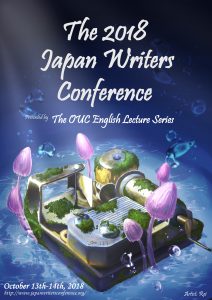 I will describe various kinds of writing contests, the pros and cons of entering said contests, and give advice on how to improve an entrant’s chances of winning.
I will describe various kinds of writing contests, the pros and cons of entering said contests, and give advice on how to improve an entrant’s chances of winning.
There are many contests for writers. Some may think that it’s not worth the time or the cost of the entrance fees. After all, many contests get hundreds of submissions, and judging is often somewhat subjective – every reader has different likes and dislikes. However, thanks to winning or placing in writing competitions, I have received plane tickets to Paris, Sydney, and Columbia, South Carolina (from my home in Japan). I’ve also been awarded cash, medals, trophies, and plaques and shiny prize stickers for my books, not to mention bragging rights and prestige. A contest win can also be an excuse for a burst of publicity. Contests may lead to recognition, getting an agent or publisher, and book sales. So how do you decide which contests to enter? How do you win? In this session I will share my expertise as a frequent contest entrant, sometime winner, and occasional judge.
Suzanne Kamata has won many awards for her writing including a grant from SCBWI for her forthcoming novel tentatively titled Indigo Girl (GemmaMedia 2018), a grant from the Sustainable Arts Foundation for her as-yet-unpublished mother/daughter travel memoir Squeaky Wheels, the Paris Book Festival Grand Prize for Gadget Girl: The Art of Being Invisible (GemmaMedia 2013), and an IPPY Silver Medal for her most recently published novel The Mermaids of Lake Michigan (Wyatt-Mackenzie Publishing 2017).
Tom Baker to discuss book reviewing at Japan Writers Conference
Posted by Tom Baker
The Japan Writers Conference, a free annual event that invariably attracts at least a few JETs, will be held at Otaru University of Commerce on Oct. 13 and 14. One of the JETs giving presentations this year will be Tom Baker (who wrote this post, along with a recent Japan News article previewing the event). Here’s the official description of his presentation:
 Anatomy of a Book Review
Anatomy of a Book Review
Short lecture with Q&A
“Anatomy of a Book Review” will explain how a book review is structured and what elements it should include. The key is to not merely indulge in one’s own reaction to a book, but to focus on being an informative and trustworthy guide for other readers.
A book review is like a book in miniature. It must grab the reader’s attention at the beginning, hold their interest through the middle, and leave them feeling satisfied to have spent their time on it by the end. But what goes into each of those parts and how do you put them together?
“Anatomy of a Book Review” will pin several reviews to the dissecting table to look at what parts they include and what function those parts serve. Vital organs include a catchy lead, facts about the author, and at least a sketch of the context in which the book appears.
Reviews of fiction and nonfiction will be compared. For any type of book, reviewers of course want to express their opinions. This presentation will focus on doing so in a way that fulfills the reviewer’s mission to be a concretely helpful guide for other readers.
Tom Baker has written and published about 300 book reviews over the past 20 years. He edited the Books page of The Daily Yomiuri, which is now The Japan News, where he edits the Bound to Please column. He was the ACCJ Journal’s book columnist for two years.
Holly Thompson to speak about picture books at Japan Writers Conference
Posted by Tom Baker
The Japan Writers Conference, a free annual event that invariably attracts at least a few JETs, will be held at Otaru University of Commerce on Oct. 13 and 14. One of the JETs giving presentations this year will be poet and novelist Holly Thompson, who first came to Japan in connection with the pre-JET MEF program. She will present “Half the Story: Writing for the Picture Book Market.” Here’s the official description of her presentation:
Short Lecture, Exercises and Q&A
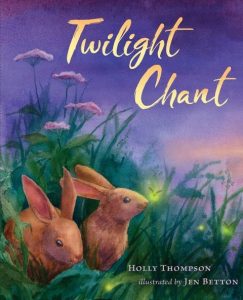 Picture book writing is a particular art. Writers of picture book manuscripts must write for page turns and create opportunities for the illustrator—writing just enough to offer possibilities. This session introduces the craft of writing picture books for current English-language picture book markets.
Picture book writing is a particular art. Writers of picture book manuscripts must write for page turns and create opportunities for the illustrator—writing just enough to offer possibilities. This session introduces the craft of writing picture books for current English-language picture book markets.
Writing is only half the story in picture books–images and text interact to tell the story together. So how do we write text without saying too much? Where in our writing should we step aside for the illustrator? And how do we compress stories for the strict count of 32 pages? How can we skill up to craft manuscripts that appeal to editors and art directors for their illustration possibility? This session will explore the anatomy of the picture book as it pertains to writers and offer guidelines for crafting fresh, marketable picture book manuscripts. We’ll examine sample picture books—fiction, nonfiction, poetry—and try some interactive exercises. We will address the current English-language picture book markets and share the gaps, openings and opportunities for writers to get a foot in the door.
Holly Thompson is author of the picture books Twilight Chant; One Wave at a Time, The Wakame Gatherers: verse novels Falling into the Dragon’s Mouth, Orchards, The Language Inside; and the novel Ash. She writes poetry, fiction and nonfiction, is SCBWI Japan Regional Advisor, and teaches at Yokohama City University.
Suzanne Kamata to introduce “Best Asian Short Stories” at Japan Writers Conference
Posted by Tom Baker
The Japan Writers Conference, a free annual event that invariably attracts at least a few JETs, will be held at Otaru University of Commerce on Oct. 13 and 14. One of the JETs giving presentations this year will be Suzanne Kamata, whose story “Monchan” appears in the “The Best Asian Short Stories 2017” anthology. Suzanne will be giving two presentations. Here’s the official description of one of them:
Kitaab Publisher Zafar Anjum and contributor Suzanne Kamata will discuss The Best Asian Short Stories 2017 anthology. Anjum will also talk about other anthologies in the works and publishing opportunities for Japan-based writers and translators in Singapore.
Zafar Anjum, who heads the independent Singapore publishing house Kitaab International, and contributor Suzanne Kamata, will introduce The Best Asian Short Stories 2017 anthology. In addition to the anthology series, Kitaab has published novels, short story collections and stories for children. Anjum will also discuss his vision for Kitaab and publishing opportunities for Japan-based writers and translators. There will be a question and answer period.
Zafar Anjum is a writer, publisher, and filmmaker who lives and works in Singapore. His books include Kafka in Ayodhya and Other Short Stories (Kitaab International, 2015), Iqbal: The Life of a Poet Philosopher and Politician (Random House India, 2014), and The Singapore Decalogue (Red Wheelbarrow, 2012). He is the founder-editor of Kitaab, an online journal and publishing company that promotes Asian writing in English.
Suzanne Kamata is the author or editor of ten published books including, most recently Screaming Divas (Simon Pulse, 2014), The Mermaids of Lake Michigan (Wyatt-Mackenzie Publishing, 2017) and A Girls’ Guide to the Islands (Gemma Open Door, 2017). Her story “Mon-chan” was selected for inclusion in The Best Asian Short Stories 2017 anthology. She is an Associate Professor at Naruto College of Education.
WIT Life #328: Making Japanese History at the U.S. Open
Written by professional Writer/Interpreter/Translator Stacy Smith (Kumamoto-ken CIR, 2000-03), WIT Life is a periodic series about aspects of Japanese culture such as film, food and language. Stacy starts her day by watching Fujisankei’s newscast in Japanese, and here she shares some interesting tidbits and trends along with her own observations.
Being an avid tennis fan, I was thrilled when my clients asked me if I wanted to join them at the U.S. Open women’s semifinals last night. I was especially excited because not only would I get to see Serena during her “Don’t call it a comeback” tour, but I would get to see Japanese rising tennis superstar Naomi Osaka play live for the first time. Naomi set a personal record by reaching her first Grand Slam quarterfinal here, and she and Kei Nishikori together made history by becoming the first Japanese duo to reach the semifinals of the same Grand Slam tournament. The last time Japanese players advanced into the later rounds simultaneously was back in 1996, when Shuzo Matsuoka and Kimiko Date reached their respective quarterfinals at Wimbledon (Shuzo incidentally was Kei’s coach in Japan when he was 12).
Coincidentally enough, Naomi Osaka (大坂なおみ) was born in the same city as her last name (大阪) to a Japanese mother and a Haitian father. When she was 3, they moved to the U.S. with her and her older sister Mari, also a tennis player, but for the sake of their tennis careers their father made the savvy decision that they would represent Japan. It’s refreshing that despite not being fluent in Japanese and not being purely Japanese, she has a huge backing in Japan. At the match last night, a Haitian group was sitting behind us and enthusiastically calling out her name at regular intervals. We ended up chatting and one guy explained that Haitian fans want to claim her as their own, and that they get frustrated when she is described as only “Japanese” as opposed to “Haitian-Japanese.”
She and opponent Sloane Stephens slugged it out with their amazingly powerful ground strokes, some rallies going as long as 18 points. In her post-match comments, when asked why she was able to continuously hold serve despite Sloane’s 13 break chances, Naomi said, Read More
WIT Life #326: New York Japan CineFest 2018
Written by professional Writer/Interpreter/Translator Stacy Smith (Kumamoto-ken CIR, 2000-03), WIT Life is a periodic series about aspects of Japanese culture such as film, food and language. Stacy starts her day by watching Fujisankei’s newscast in Japanese, and here she shares some interesting tidbits and trends along with her own observations.
Last night I caught day 1 of the New York Japan CineFest held at Asia Society. 2018 marks the seventh anniversary of the event, and it seems to get better every year. The lineup featured six short films that ranged in length from eight to 28 minutes, and included two documentaries.
My favorite was the final film And So We Put Goldfish in the Pool from Makoto Nagahisa, which clo cked in at the longest 28 minutes but went by in a flash. It is based on a true story of four 15-year old girls from a small town in Saitama who released 400 goldfish into their high school pool in order to escape the boredom of their daily lives. Its zany tone and fast-paced story kept the audience captivated and laughing. Despite its humorous tone, it poignantly addresses the universal feelings experienced during high school and certainly brought back memories of that time in my life. Last year it received the Short Film Grand Jury Prize at Sundance (you can watch the film via this link), and it was Nagahisa’s directorial debut.
cked in at the longest 28 minutes but went by in a flash. It is based on a true story of four 15-year old girls from a small town in Saitama who released 400 goldfish into their high school pool in order to escape the boredom of their daily lives. Its zany tone and fast-paced story kept the audience captivated and laughing. Despite its humorous tone, it poignantly addresses the universal feelings experienced during high school and certainly brought back memories of that time in my life. Last year it received the Short Film Grand Jury Prize at Sundance (you can watch the film via this link), and it was Nagahisa’s directorial debut.
Another highlight of the program was Sugihara Survivors, which told the story Read More
WIT Life #325: Shogun World
Written by professional Writer/Interpreter/Translator Stacy Smith (Kumamoto-ken CIR, 2000-03), WIT Life is a periodic series about aspects of Japanese culture such as film, food and language. Stacy starts her day by watching Fujisankei’s newscast in Japanese, and here she shares some interesting tidbits and trends along with her own observations.
Hope everyone is enjoying the Memorial Day weekend! I’m out in Colorado, heading into the tail end of a three-week State Department interpreting gig on the topic of disability access and inclusion. This was something I knew very little about before starting, and have come to understand more about the situation both here and in Japan. Our last week will be spent in Seattle, where I’m sure there’s lots more to learn…
The HBO drama Westworld recently entered its second season, and while I am not a regular viewer I tuned in as I had heard it would have a Japan focus. The show tells the story of life-like robots in a Wild West-themed amusement park, and the complications that arise when they become sentient. This time around the series is set during Japan’s Edo Period in a place called Shogun World. Great pains were taken to ensure accuracy, even down to the Japanese that would have been spoken at the time. And it doesn’t hurt that the lineup of Japanese actors includes standouts like Hiroyuki Sanada and Rinko Kikuchi, who play a ronin robot and lead geisha respectively.
For more about Shogun World, check out this Japan Times article.
WIT Life #324: Inland Sea
Written by professional Writer/Interpreter/Translator Stacy Smith (Kumamoto-ken CIR, 2000-03), WIT Life is a periodic series about aspects of Japanese culture such as film, food and language. Stacy starts her day by watching Fujisankei’s newscast in Japanese, and here she shares some interesting tidbits and trends along with her own observations.
This weekend I caught Kazuhiro Soda’s Inland Sea (港町) at the Film Society of Lincoln Center’s Art of the Real. The festival’s opening film about John McEnroe whet my appetite for more documentaries, and I was looking forward to seeing the latest from Soda after enjoying his film Campaign at Japan Society several years back. Inland Sea is set near the hometown of his wife Kiyoko Kashiwagi, who is also the film’s producer. They were both on hand to introduce the film and take part in a post- screening Q&A. In his introduction Soda shared that the film adheres to their Ten Commandments, which include tenets such as no research before shooting, not setting any themes or goals before editing, and paying for the production on their own (to the dismay of producer Kashiwagi).
Inland Sea takes place in the port city of Ushimado in Okayama Prefecture, population 7000. Many of the younger residents have already left, and the documentary’s main subjects are the octagenarians Wai-chan and  Kumiko, respectively a fisherman and the town crier. They are both captivating subjects, but as a cat lover I was most entranced by the stray felines who congregate at the home of transplants to the area who have been feeding them. I was engaged throughout the film’s two hour plus duration, but it definitely could have been cut in places, especially the long takes on the fishing boat.
Kumiko, respectively a fisherman and the town crier. They are both captivating subjects, but as a cat lover I was most entranced by the stray felines who congregate at the home of transplants to the area who have been feeding them. I was engaged throughout the film’s two hour plus duration, but it definitely could have been cut in places, especially the long takes on the fishing boat.
During the Q&A Soda explained that the reason he chose to make a black and white film (except for the last color scene) was that he wanted to portray Read More
Japan Writers Conference seeks presenters
Posted by Tom Baker
 The 12th annual Japan Writer’s Conference will be held this year in Hokkaido, a new location for the event. The organizers are now seeking writers to give presentations on the weekend of Oct. 13-14 at Otaru University of Commerce in Otaru, Hokkaido. If you are a writer and would like to participate, contact details appear at the bottom of this post.
The 12th annual Japan Writer’s Conference will be held this year in Hokkaido, a new location for the event. The organizers are now seeking writers to give presentations on the weekend of Oct. 13-14 at Otaru University of Commerce in Otaru, Hokkaido. If you are a writer and would like to participate, contact details appear at the bottom of this post.
Each year, the Japan Writers Conference attracts English-language writers in a variety of genres and fields to share ideas on the art, craft and business of writing. And each year, a significant number of past and present JETs take part. These have included anthologist Suzanne Kamata, textbook author Todd Jay Leonard, travel writer Victoria Vlisides, short story writer Claire Dawn-Marie Gittens, novelists Benjamin Martin, Percival Constantine and Holly Thompson (the last of whom came to Japan in connection with the pre-JET MEF program), and journalists Elaine Lies and Tom Baker (the latter of whom wrote this post).
Past presenters have also included Australian poet David Gibley, “Slumdog Millionaire” novelist Vikas Swarup, “Cash Crash Jubilee” novelist Eli K.P. William, young-adult author Margi Preus, horror author Thersa Matsuura, and memoirist Leza Lowitz. The 2017 edition of “The Best American Mystery Stories,” edited by John Sandford, features a story by Karen McGee, who hosted the 2017 event in Tokyo. The host of this year’s event will be travel writer and textbook author Shawn Clankie.
Representatives of literary journals such as The Font and Cha have participated in past years, as have representatives of publishers including Fine Line Press and Isobar Press.
Run entirely by volunteers, the Japan Writers Conference is a free event open to all. Details on this year’s event can be found at http://www.japanwritersconference.org.
Writers interested in making a presentation at the 2018 conference are asked to contact organizer John Gribble at gribblej@gol.com. The deadline for presentation proposals is June 1.
WIT Life #323: Japan Week 2018
Written by professional Writer/Interpreter/Translator Stacy Smith (Kumamoto-ken CIR, 2000-03), WIT Life is a periodic series about aspects of Japanese culture such as film, food and language. Stacy starts her day by watching Fujisankei’s newscast in Japanese, and here she shares some interesting tidbits and trends along with her own observations.
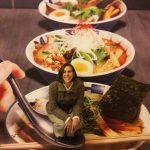 Japan Week 2018 is taking place through the weekend at Grand Central’s Vanderbilt Hall, and this year’s theme is 3D Trick Art. Sponsored by the Japan National Tourism Organization (JNTO), the event strives to create an Instagrammable, interactive experience for visitors. In addition to the regular array of booths from travel agencies, various regions in Japan and Japanese food and drink purveyors, there are several large backdrops into which you can insert yourself for the ultimate selfie. My favorite was the bowl of ramen into which you can become one of the ingredients, and others include becoming a topping for sushi, helping to carry the mikoshi at a matsuri and shuttling around a sumo wrestler in a rickshaw (Fujifilm is even on hand to help you print out these funny shots after you take them!). Read More
Japan Week 2018 is taking place through the weekend at Grand Central’s Vanderbilt Hall, and this year’s theme is 3D Trick Art. Sponsored by the Japan National Tourism Organization (JNTO), the event strives to create an Instagrammable, interactive experience for visitors. In addition to the regular array of booths from travel agencies, various regions in Japan and Japanese food and drink purveyors, there are several large backdrops into which you can insert yourself for the ultimate selfie. My favorite was the bowl of ramen into which you can become one of the ingredients, and others include becoming a topping for sushi, helping to carry the mikoshi at a matsuri and shuttling around a sumo wrestler in a rickshaw (Fujifilm is even on hand to help you print out these funny shots after you take them!). Read More
WIT Life #322: Then They Came for Me
Written by freelance Writer/Interpreter/Translator Stacy Smith (Kumamoto-ken CIR, 2000-03), WIT Life is a periodic series about aspects of Japanese culture such as language, film, business, food and politics. Stacy starts her day by watching Fujisankei’s newscast in Japanese, and here she shares some interesting tidbits and trends along with her own observations.
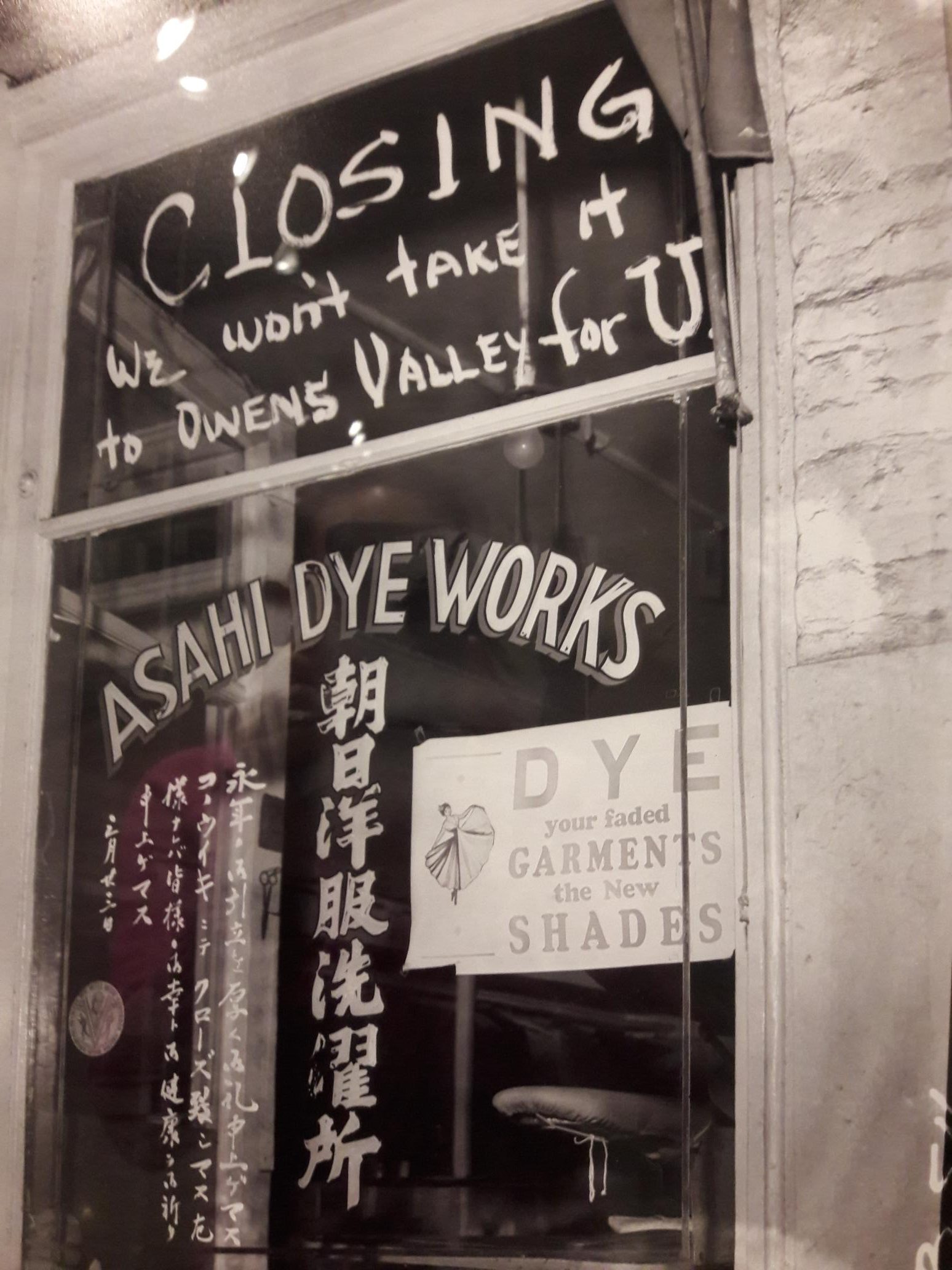
Sign from Japanese-run business telling customers their clothing won’t be brought to the incarceration camp
After interpreting in Manhattan Criminal Court earlier this week, I stopped for lunch in Chinatown and found myself with some time on my hands afterwards. I decided to visit the International Center of Photography and was nicely surprised to find the exhibition Then They Came for Me: Incarceration of Japanese Americans during WWII (through May 6), a comprehensive portrayal of this reprehensible period in American history. It includes works from prominent photographers such as Dorothea Lange and Ansel Adams, letters and other personal mementos, and moving video testimonials from those who were incarcerated or have family members who had been.
From 1942-1946, thousands of Japanese Americans were forcibly relocated to incarceration camps in desert and swamp areas of the Western U.S. The original term for this had been “internment,” but I learned from the exhibition that Japanese American organizations and scholars have developed new terminology in an effort to more accurately reflect the wrongness of what took place. Read More

